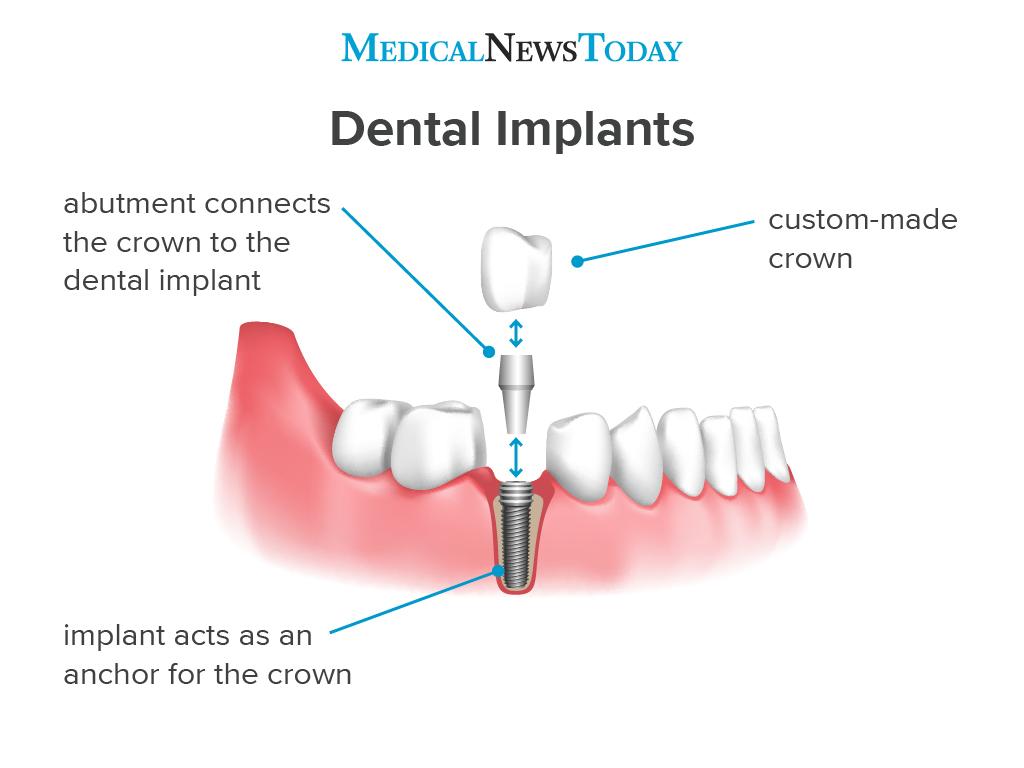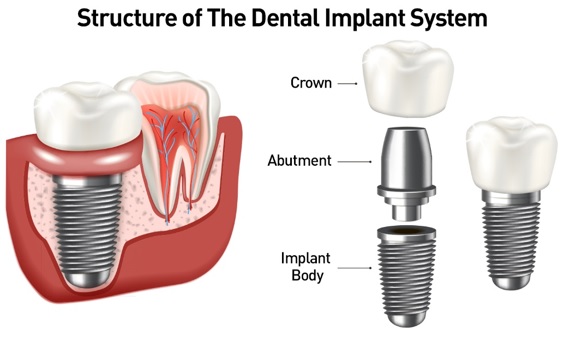The Ultimate Guide To Dental Implants
The Ultimate Guide To Dental Implants
Blog Article
The Main Principles Of Dental Implants
Table of ContentsSee This Report about Dental ImplantsThe Dental Implants IdeasThe Best Strategy To Use For Dental ImplantsAn Unbiased View of Dental Implants
are clinical gadgets operatively implanted right into the jaw to bring back an individual's ability to eat or their appearance. They provide assistance for synthetic (phony) teeth, such as crowns, bridges, or dentures. When a tooth is lost because of injury or condition, a person can experience problems such as rapid bone loss, malfunctioning speech, or modifications to chewing patterns that cause pain.
Framework of The Oral Implant System choosing dental implants, speak to your dental supplier regarding the possible benefits and risks, and whether you are a prospect for the procedure. Things to consider: Your total wellness is a vital consider establishing whether you are an excellent candidate for dental implants, how much time it will certainly take to recover, and just how long the implant might remain in place.
Smoking might affect the recovery process and reduce the long-term success of the implant. The recovery procedure for the dental implant body may take several months or longer, throughout which time you normally have a momentary abutment in area of the tooth. the dental implant treatment: Very carefully follow the dental health instructions offered to you by your dental company.
Some Known Factual Statements About Dental Implants
Implant failure can cause the need for an additional operation to take care of or change the implant system. Brings back the capacity to eat Restores cosmetic appearance Assists maintain the jawbone from shrinking because of bone loss Maintains the health and wellness of the bordering bone and gums Aids keep adjacent (neighboring) teeth secure Enhances lifestyle Damage to bordering natural teeth throughout implant positioning Injury to the surrounding cells throughout surgery, such as sinus perforation Injury during surgical treatment (for instance, crack of bordering jawbone) Poor feature, such as seeming like the teeth do not attack with each other normally A sensation that the tooth hangs or turning in area resulting from a joint screw loosening up Implant body failing (looseness of the dental implant body) because of systemic infection, which may be more probable in individuals with uncontrolled diabetics issues because of regional infection in bone and gum tissues supporting the implant body due to postponed recovery, which may be more probable in clients who smoke Trouble cleansing the periodontals around the implant, resulting in inadequate dental hygiene Without treatment gum illness Post-surgical pins and needles due to nerve impingement or damages Constantly inform health care carriers and imaging technicians learn this here now that you have oral implants prior to any type of magnetic resonance imaging (MRI) or x-ray treatments.
FDA is not knowledgeable about any type of adverse occasions reported for MRI or x-ray treatments with dental implants. Oral implants systems are usually made from materials that adhere to worldwide consensus criteria of the International Organization for Standardization (ISO) or ASTM International. These criteria have information of what makes a safe product.
Various other products such as gold alloys, cobalt-based alloys, titanium alloys, or ceramic materials are sometimes made use of. The security accounts of these products are widely known. Dental implant systems are reviewed according to worldwide agreement standards. Biocompatibility testing, to reveal that physical contact with the gadget does not create problems like inflammation or allergy, is part of the analysis that helps make sure the materials in the oral implant system are safe and do not trigger unfavorable effects when implanted in individuals.

The 8-Second Trick For Dental Implants
Some individuals are not qualified for oral implant surgical treatment. It is for oral surgeons to operate on people with: severe illnessuncontrollable metabolic diseasebone or soft tissue illness or infectionIf these concerns are dealt with, a person can have the surgical treatment. Dental Implants. In, dental specialists avoid from operating on people with: If individuals with any one of the above go through dental implant surgical treatment, there is a higher risk of the dental implant falling short
Some individuals have a jawbone abnormality that avoids adequate bone for a dental implant from developing. In such instances, a doctor may require to do a ridge alteration. This includes raising the gum tissue to reveal the location click here for more of warped bone. The specialist will then use a bone or bone substitute to repair and accumulate the area.
Dental implant surgical procedure is a tailored procedure. It's not the same for everyone. The following offers a general summary of what you can anticipate your dental expert, dental cosmetic surgeon, periodontist or prosthodontist to do: Put the implant operatively. Offer you time to heal. Affix the blog post and last crown, bridge or denture.
Next, your specialist will this post carefully put the oral implant into your jaw. Ultimately, your specialist will certainly rearrange your gums and close the laceration with stitches. If your implant is near the front of your mouth, your dental professional will certainly make a momentary tooth for you to put on up until you heal. This way, you will not have a void in your smile while you recoup.
The 3-Minute Rule for Dental Implants
Your provider can tell you what to anticipate in your situation. Throughout the healing phase, your jawbone needs to fuse to the dental implant. This procedure, called osseointegration, is essential for stability and lasting success. This process can take anywhere from three to 9 months. In some instances, it may take much longer.
Once your dental implant heals, your dental practitioner can affix the joint (tiny adapter post) and your last restoration (crown, bridge or denture). This typically takes regarding one hour to finish and may need a second minor surgical treatment. You shouldn't feel any type of pain during your oral implant procedure because your supplier will use medicine to numb your periodontals.
Report this page